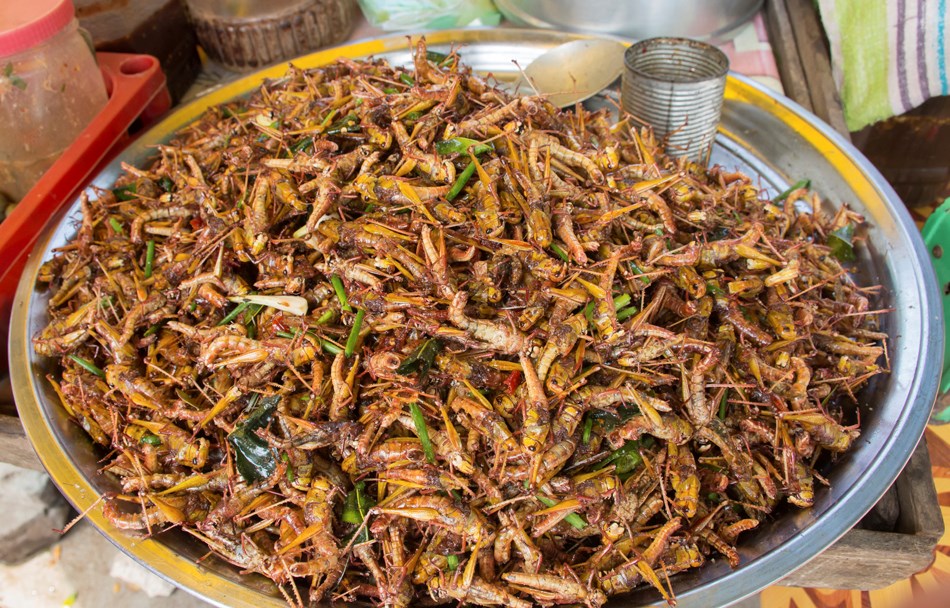For the past few years, kale has been king of the trendy nutrient-dense foods, but in our quest for the newest, most innovative and sometimes out of the ordinary super foods, it might have finally met its match in bugs.
Yes, bugs.
Entomophagy is the practice of eating insects. Foodies and earth-conscious individuals are catching on to this slowly rising trend that has been a dietary stable for many cultures across the globe for millennia. We westerners have been brought up to think of insects as yucky, but it might be the way of the future.
As our world slowly becomes apocalyptic (zombies, etc.), we gotta start getting creative with our food choices. Whether you eat meat or not, the fact is raising and manufacturing of meat can cause havoc on the environment. Yes, some practices are more sustainable than others, but the bottom line is that as we face a global food crisis, the raising of bugs and insects could be the answer, because they actually require far fewer resources (there are actual bug farms. According to a 2007 study by the Water Footprint Network, every kilogram of ground beef requires 16,000 litres of water to produce. However, cricket meat uses almost no water at all, and requires less space. Even the United Nations recommends adding bugs to your food repertoire.
Insects are not only environmentally sustainable, but also very abundant, and eating bugs is actually great for your health, too. Insects are a great source of protein and B vitamins, calcium, zinc, fibre, copper, potassium and healthy fats. They really pack a bunch of nutrition for the human body, probably why a lot of other animals and cultures already make it an important part of their diet.
Real talk: I did try a grasshopper once at a foodie event, they were the tiny ones, not the huge fellas, and I’m not there yet. They were seasoned to taste spicy and were super crunchy and slightly chewy.
Bottom line is that eating insects is a huge untapped source of nutrients and calories that would help to ease the needs of our growing human population. There are more than 1,900 edible insects on earth (that we know of).
Insects tend to take on the flavour of whatever it's been seasoned with, similar to tofu. They have also been compared to nuts, seeds, crab meat and buttery popcorn in taste and texture. That’s all dependant on your insect of choice, of course; mealworms are going to taste different than grasshoppers and so forth. Some farms, like Entomo Farms in Ontario, are even making nutrient dense insect flours, which go great in a smoothie.
After hearing the above information you might be tempted to ditch your Costco card and go out and hunt for your own bugs and insects as a means of grabbing life by the balls. The bad news is that some insects easily accumulate environmental toxins, and there is little regulation when it comes to gathering, farming, selling and serving insects. The bug industry is still in the early stages, but its probably a good idea to trust the professionals – they probably have a better idea of what they are doing than you do hunting for your supper in Stanley Park.
Mealworm Protein Smoothie
Ingredients:
1 cup coconut water
1 handful of frozen blueberries
1 small frozen banana
2-3 whole dates, pitted
2 tablespoons coconut milk
2 tablespoons mealworm flour
Directions:
Put all the ingredients in a blender and blend ingredients on high until smooth.
Note: the mealworm acts as a protein powder.



